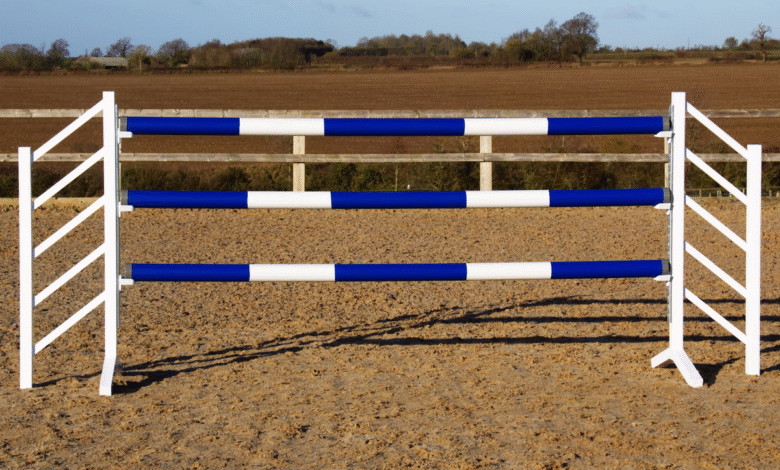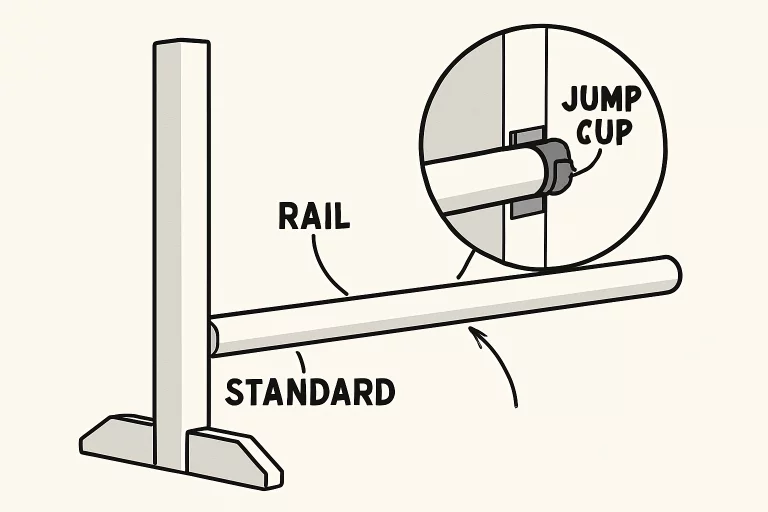Horse Jump Cups 101: What They Are and Why They Matter

Introduction to Horse Jump Cups
Equestrian jumping demands a seamless blend of precision, safety, and reliability from every piece of equipment involved, no matter how small. Among the most critical yet often overlooked accessories are horse jump cups. These simple yet ingeniously designed devices secure jump rails onto standards, providing the versatility needed during courses and the critical safety margin that can prevent accidents. The main purpose of horse jump cups is to hold the jump rails securely in place, allowing them to dislodge easily if a horse rubs or hits them. This ensures a safer experience for both horse and rider, minimizing the risk of injury. To truly appreciate why horse jump cups matter, it is important to examine the different types available, the materials used, and the broader safety regulations governing their use in schooling environments and competitions.
Types of Horse Jump Cups
Several types of horse jump cups are engineered to suit specific scenarios and rider needs. The main types include:
- Traditional Pin Cups: Often found in schooling rings and home arenas, these jump cups attach to the jump standard using a simple pin. The advantage of traditional pin cups lies in their solid grip on the rail, making them a popular choice for basic training and daily use. However, adjusting jump height with this system requires manually removing and reinserting the pin, which can be time-consuming during busy lesson programs. Despite their classic design, they remain a robust and reliable choice.
- Pinless Cups: Pinless jump cups offer a more streamlined and modern approach. They slide directly into a keyhole-style track mounted to the jump standard, allowing the cups to be quickly adjusted up or down the standard with minimal effort. This design is especially advantageous during competitions or complex jump setups with frequent, quick height changes. Pinless cups also eliminate the risk of losing pins, streamlining the setup and take-down process for riders and show managers.
- Breakaway Cups: Designed with maximum safety in mind, breakaway jump cups are specifically engineered to release the rail on impact, dramatically reducing the risk of the horse catching a leg or suffering a fall. They are often required in higher levels of competition where strict safety protocols are followed. These cups use a special clip or magnet to allow the rail to drop away instantly, safeguarding both horse and rider during more challenging rounds.
Each type brings unique advantages and should be chosen based on the specific demands of the discipline, the skill level of riders, and the context in which the equipment will be used.
Materials Used in Jump Cups
A horse jump cup’s longevity, safety, and functionality are closely tied to the materials used to manufacture them. The two most common materials found in jump cup construction are:
- Metal: Metal jump cups, built from powder-coated steel or aluminum, are prized for strength and resilience. Their sturdy construction makes them ideal for busy lesson barns and frequent use in competition rings. The main consideration is ongoing maintenance, as exposure to moisture and weather elements can lead to rust or corrosion over time. Well-maintained metal cups provide a long service life and solid performance in any setting.
- Plastic: Modern plastic jump cups are valued for their lightweight design and resistance to the elements, such as sun, rain, and temperature fluctuations. They are easy to handle—even for young riders or novices—and reduce fatigue during setup and removal. However, it is essential to note that lower-quality plastics can crack or deform under significant impact. High-grade options offer surprisingly robust performance in both schooling and competitive environments.
When selecting between metal and plastic, consider the frequency of use, environmental exposure, and the level of maintenance you can commit to for the safest possible setup.

Choosing the Right Jump Cups
Choosing appropriate jump cups is a matter of safety, regulation, and practicality. Here’s what to keep in mind:
- Discipline: Different equestrian disciplines have varied requirements. Hunter, jumper, and equitation events may specify certain designs or sizes of jump cups to ensure fair competition and safety. Always review the relevant event rulebook before selecting cups for any official program.
- Adjustability: If you frequently adjust jump heights to accommodate different riders or exercises, pinless cups can dramatically speed up the process and reduce disruption to your training sessions. Their convenient design means less fumbling with small parts and more riding time.
- Safety Features: Safety is paramount, especially for riders working at higher levels or with younger horses. Incorporating breakaway or safety-certified jump cups provides peace of mind that the risk of entanglement or falls is minimized. These cups are often labeled “FEI-approved” or “USEF-approved”—always look for these designations if your facility hosts recognized shows.
Researching and matching the appropriate jump cup to your goals and environment is essential to achieving safety and competitive excellence.
Proper Installation and Maintenance
No matter the quality or type, a jump cup is only as safe as its installation. Secure cups firmly to jump standards, ensuring they are level and provide solid support for the rail without excessive wobble. The rail must sit evenly within each cup to allow for consistent performance and safe release. Regularly check for wear and tear, such as bent pins, cracks in plastic, or corrosion in metal models. Performing routine inspections, cleaning, and promptly replacing compromised jump cups can prevent dangerous surprises in the ring and keep your equipment compliant with evolving safety standards.
Conclusion
Though they may appear unremarkable, horse jump cups are indispensable in every well-designed jumping course. A commitment to understanding the different types, selecting appropriate materials, following regulatory guidelines, and avoiding common mistakes can make a difference in daily training and high-stakes competitions. Always prioritize safety, and reference resources such as horse jump cups guides and governing body rulebooks to make informed decisions. In equestrian jumping, attention to every detail—including the humble jump cup—helps horse and rider perform their best, confidently and safely, every time they step into the ring.




